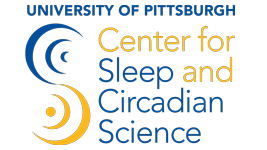Session 1 Sleep: Cells to Populations
Moderator: Martica Hall, PhD
From Dara to Everyone: 12:20 PM (Answered during discussion)
Dr Buysse, where does adenosine fit into the figure presented?
From rui zhang to Everyone: 12:35 PM (Answered during discussion)
I have a question to Dr. Wilckens about using TMS to enhance SWS indirectly
From Misol Kwon to Everyone: 12:37 PM (Answered during discussion)
Caffeine (adenosine receptor antagonist), a stimulant can influence the activity of neuronal control pathways in the CNS and PNS. Teens and young adults are increasingly consuming energy drinks which contain high content of caffeine, taurine, and other cocktail of ingredients. Are there any long-term effects of energy drinks/beverages on sleep when looking at the trajectory of young people with high consumption of energy drinks?
From Priya’s iPhone to Everyone: 12:38 PM (Answered during discussion)
Adenosine receptors are actually widespread in the body including affecting immune cells; there are purinergic receptors that assess adenosine metabolites like AMP and ATP as well as adenosine receptors (1-3)
From David Ehichioya to Everyone: 12:44 PM (answered during discussion)
Dr. Huang, would you say modified multiple platform is old method of SD in rats?
From Eunjin Lee Tracy to Everyone: 12:49 PM (answered during discussion)
Dr. Wallace, I would like to ask a question about the multidimensional sleep health. Average sleep health (e.g., average sleep duration) is definitely important. But I also think variability of sleep health (maybe calculating standard deviations) might be related to health outcomes. My questions are 1) Between average sleep health and variability of sleep health, what might be more related to health outcomes. 2) RU-SATED measure can be applicable to everyday life to examine within-person examination between sleep and health outcomes?
From Daniel Joyce to Everyone: 12:49 PM (answered during discussion)
Could you comment on the induction of SWS with TMS or other methods – Is it likely to be as restorative as endogenously generated SWS?. E.g., I have heard that SWS waves may be more of an emergent property of the processes that are going on and so inducing such waves isn’t necessarily restorative. Please ignore if this has been addressed in the lecture as I haven’t had a chance to view it yet!
From Dara to Everyone: 12:51 PM
Dr Franzen, most global self report sleep measures have been validated for children or teens. Can you recommend the best one that can be used for both children and teens (7-17 year olds)?
Sleep duration and sleep quality
From Peter Franzen to Everyone: 12:52 PM
They measure different things. If you are trying to get at daytime sleepiness, vs. delayed phase, vs. other types of sleep problems. None of them are all that great, actually.)
Child scales often need parent report, pending the age. For adolescents, Adolescent Sleep Wake Scale & Munich Chronotype Questionnaire are ones you might want to look at.
Here’s a recent review of subjective sleep measures in children:
https://www.ncbi.nlm.nih.gov/pmc/articles/PMC5303893/
See also:
https://www.ncbi.nlm.nih.gov/pmc/articles/PMC3146754/
Comment From Christopher King to Everyone: 12:58 PM
Peter and Dara – We use the ASWS [Adolescent Sleep Wake Scale] and ASHS [Adolescent Sleep Hygiene Scale]. There are other measures that can be used for insomnia including PSIS and the recent AIQ. These are adolescent self-report. Some other uses Epworth for Children and PDSS for daytime sleepiness. Big issue is validation for different ages.
Totally agree, Chris!
-Peter
From Christian Agudelo to Everyone: 12:52 PM
Baclofen and GHB does not generate “physiologic” slow-wave sleep: https://www.ncbi.nlm.nih.gov/pmc/articles/PMC3397788/
To what extent do you think that there are patterns of local sleep disruption that are cause or consequence of disease? Specifically, might patterns of local homeostatic slow-wave deficits influence different neurodegenerative diseases or psychopathology?
Super interesting, question, Christian! Not sure I know the answer. : – )
From Dan Buysse:
For Christian:
I don’t know how specific the localization gets, but since local SWA activity represents cortico-thalamic “talk,” you might expect that diseases affecting the cortex locally or regionally would show SWA deficits. For instance, I would expect that stroke or even diseases like front-temporal dementia would be associated with local SWA changes. Would have to verify that, though.
From Misol Kwon to Everyone: 12:56 PM
This question is for Dr. Guo. Your talk on sleep measurement in animal was so fun (loved all the graphics). So this question is only if we have time .. I have a huge ant farm. I love ants for number of reasons (when they are inside the farm, not outside though). I read that ants take micro naps (8-12 min). Does that mean that ants do not have nrem and rem cyclic pattern?
From Rong to Everyone: 01:02 PM
Misol, ants may have different stage but not REM/NREM cycles; usually in invertebrates, sleep is not defined as REM or NREM sleep.
From Christopher King to Everyone: 12:58 PM
Peter and Dara – We use the ASWS and ASHS. There are other measures that can be used for insomnia including PSIS and the recent AIQ. These are adolescent self-report. Some other uses Epworth for Children and PDSS for daytime sleepiness. Big issue is validation for different ages.


